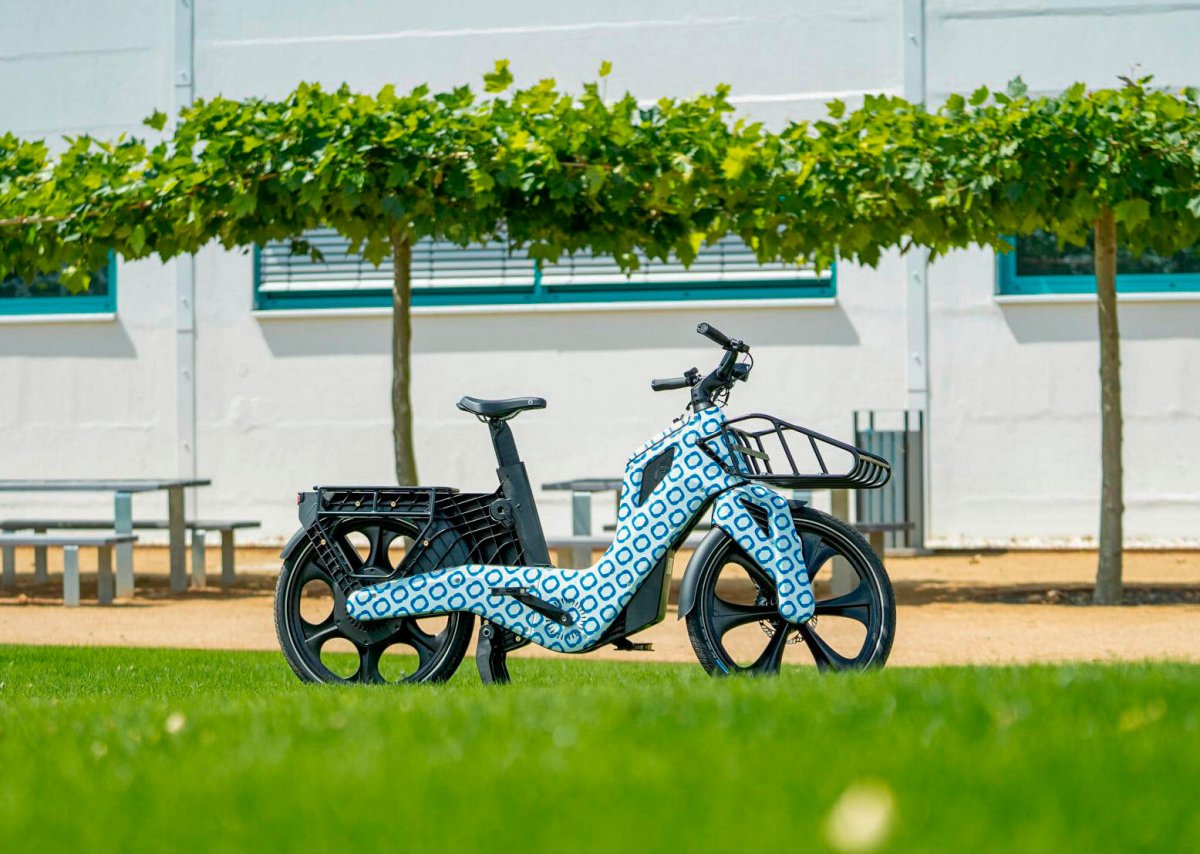“Nice bike!” A young man admires my e-bike in front of a café in the hip Glockenbachviertel in Munich. His fixie seems almost inconspicuous next to it. Not the first such reaction that day. I’m traveling with the Mocci, a bicycle like a sculpture. The frame, fork, seat post, parking support and wheels are injection molded from polyamide with fiberglass. This not only enables a futuristic design, but also eliminates the need for welding, painting and manual finishing. This makes industrial production with consistent quality possible.
Advertisement
However, there is something else that is crucial about the Mocci: it has neither a chain nor a strap. The pedals drive a generator that feeds a battery that supplies power to the wheel hub motor in the rear wheel. This “serial hybrid drive” from Schaeffler is therefore practically wear-free.
Hans Dorsch, technology journalist, was able to test one of the first Mocci prototypes in 2020.
The Mocci switches gears automatically
I adjust the saddle to my size and set off. Pedaling feels like a normal bike. I come to a construction site: slow down, steer through the detour, accelerate again. The Mocci switches gears automatically. It has three support modes with slightly different force and frequency patterns. The software keeps the cadence and strength constant on inclines and when accelerating. I could also switch gears manually, then switching levels would be simulated. But why should I do that? Riding an e-bike is simply more fun without it. According to Mocci, most people who started their test drive with the manual transmission switched to automatic after a short time and didn’t want to go back.
“We wanted to develop a low-maintenance multifunctional vehicle for factory traffic, last-mile transport and delivery fleets,” explains Ralf Busse from the manufacturer CIP Mobility Group. It has been developed for over ten years together with the Institute for Structure and Lightweight Construction at the University of Chemnitz. At over 40 kilograms, the result doesn’t really look like a lightweight construction, but the Deutsche Post bikes weigh around 45 kilos and common sharing e-bikes weigh up to 36 kilos.
Continue to the Olympic Stadium. I test the engine power on the hills. The continuous power of registration-free Pedelecs like the Mocci is limited to 250 watts, but the short-term maximum power is not. So 1300 watts and 120 Newton meters confidently push me up the climb. And the plastic chassis rolls downhill almost as if it were on rails.
Wheel sensor data, battery level, mileage
Ralf Busse calls: “You’re in the Olympic Park, right? We sent you away with an almost empty battery. Come back and we’ll swap it.” The Mocci is completely networked. On one dashboard, fleet operators can track the location and all sensor data of their bikes, including battery level and mileage. “Our pilot customers also include delivery services. A bike can travel 160 kilometers a day and it’s important to plan service instead of waiting until there are problems.”
Theft protection will be added until series production starts in May 2024. Then, after parking, the parking support and motor are blocked via the Rider app. The purchase price should be around 5,000 to 5,500 euros; leasing, including maintenance, costs from 169 euros per month.
(jl)
To home page
